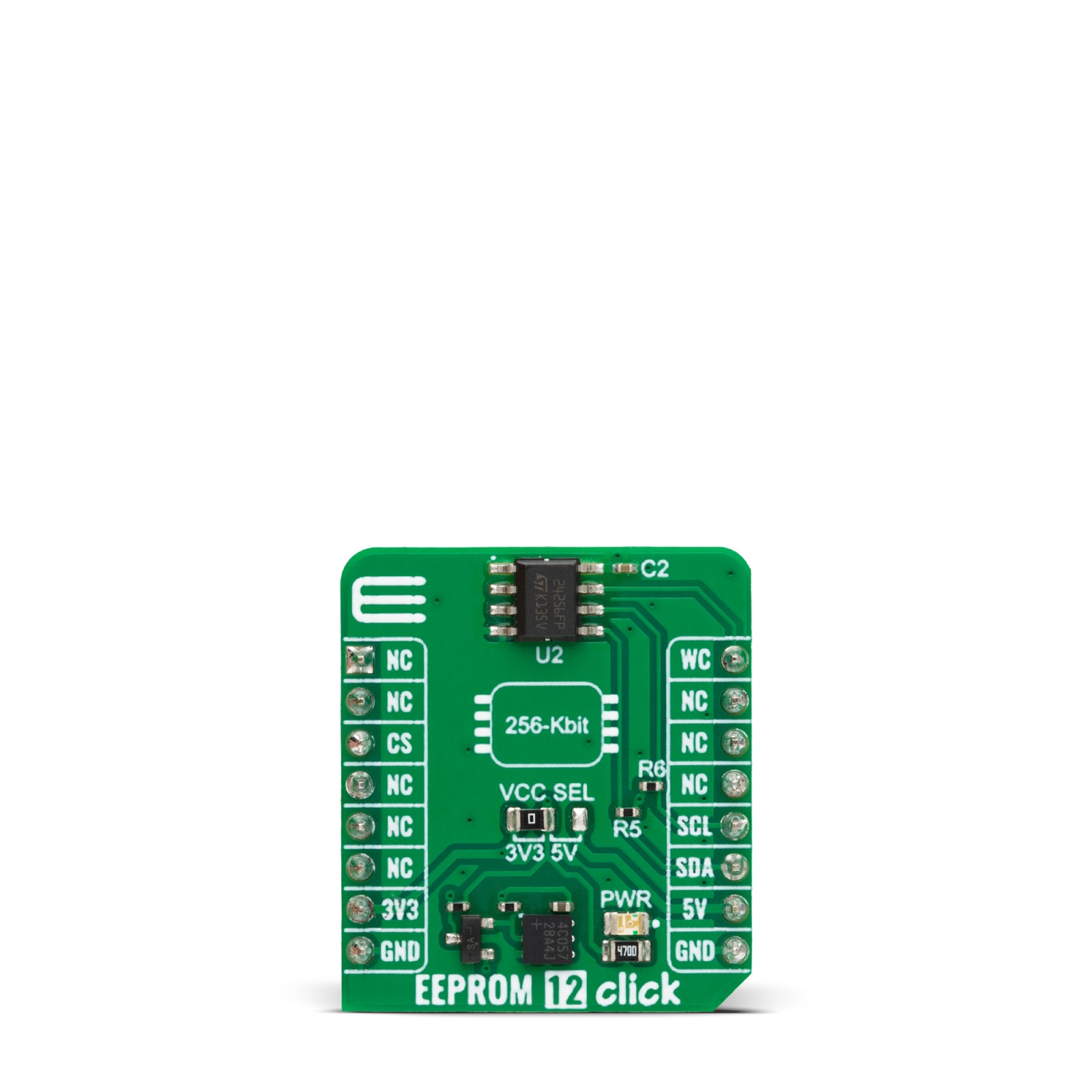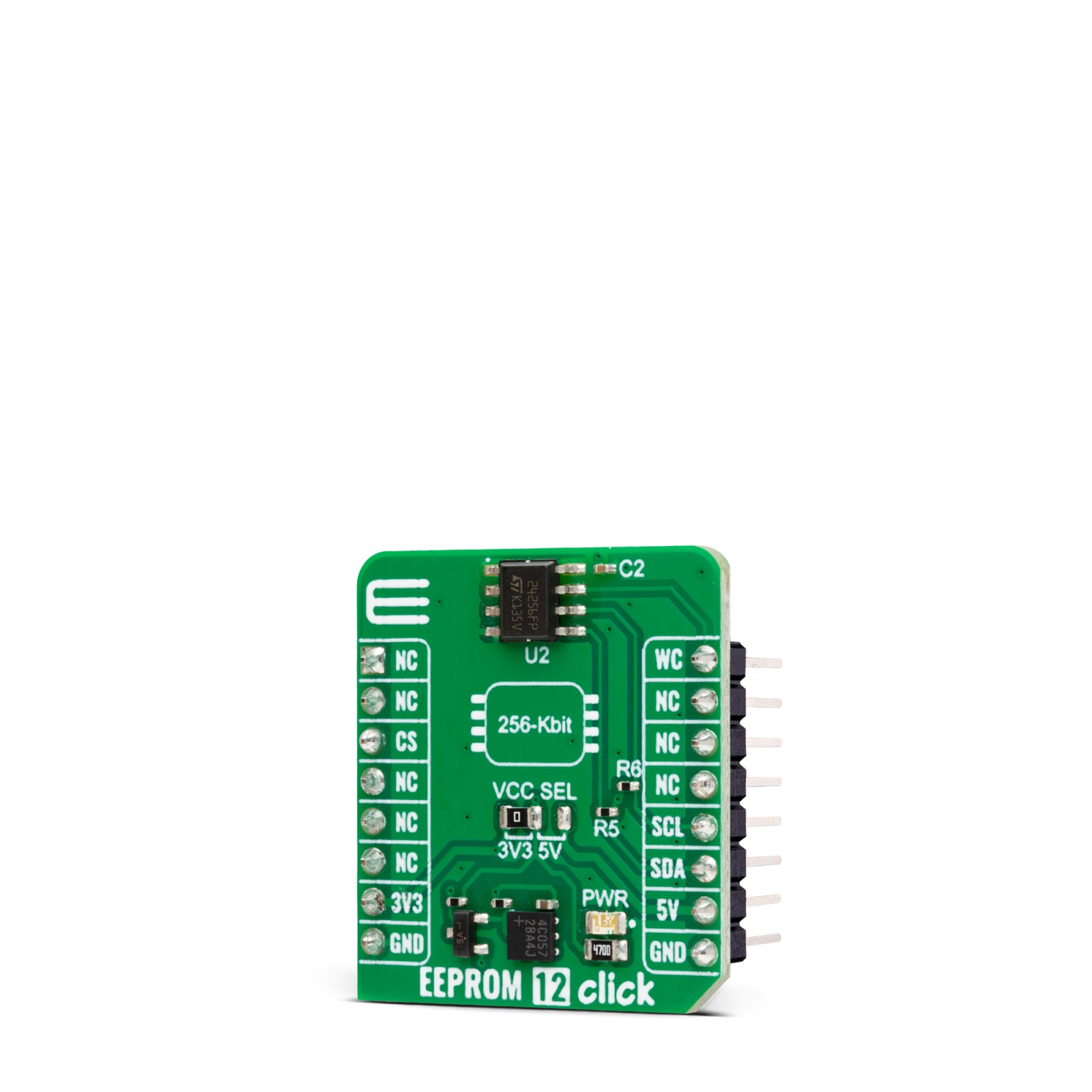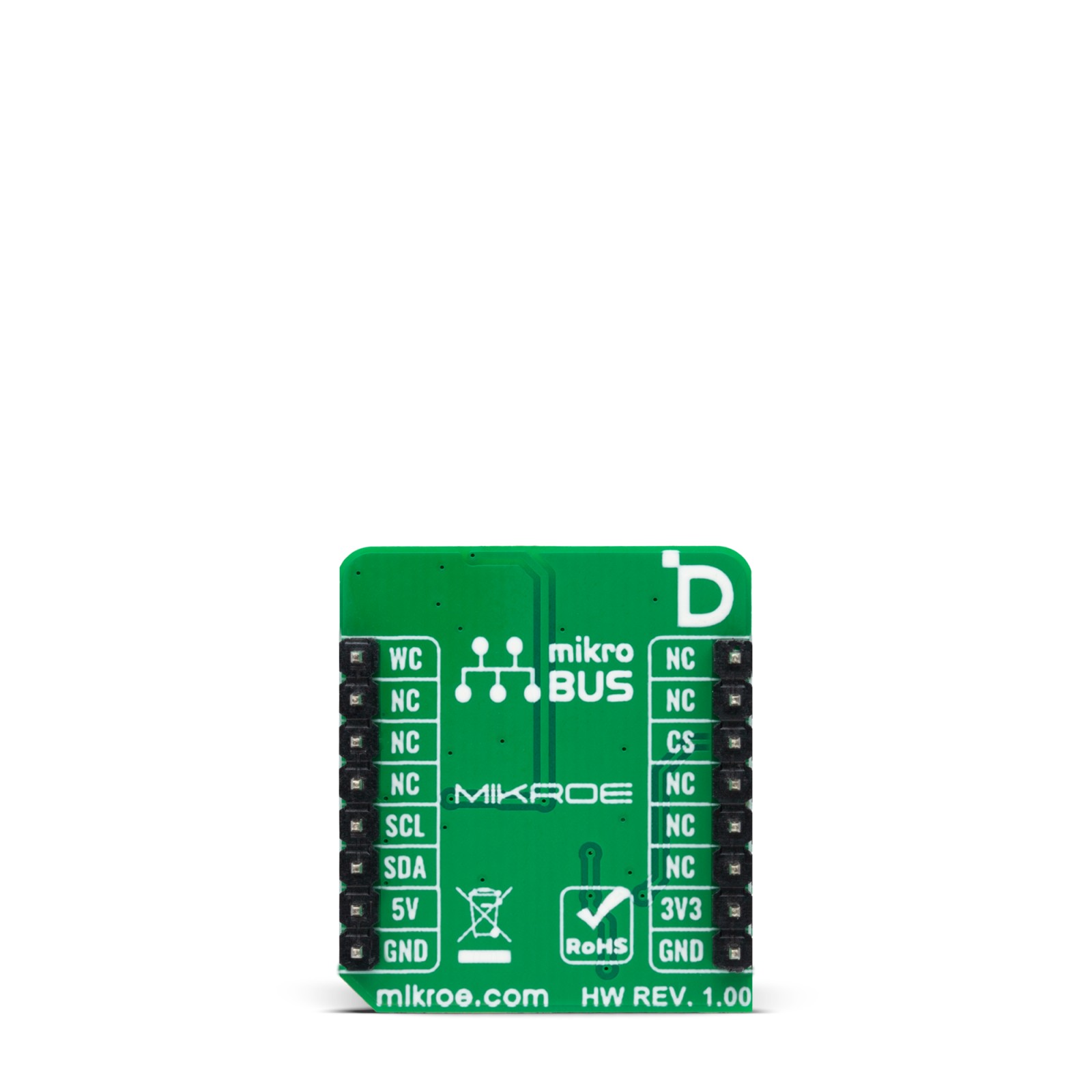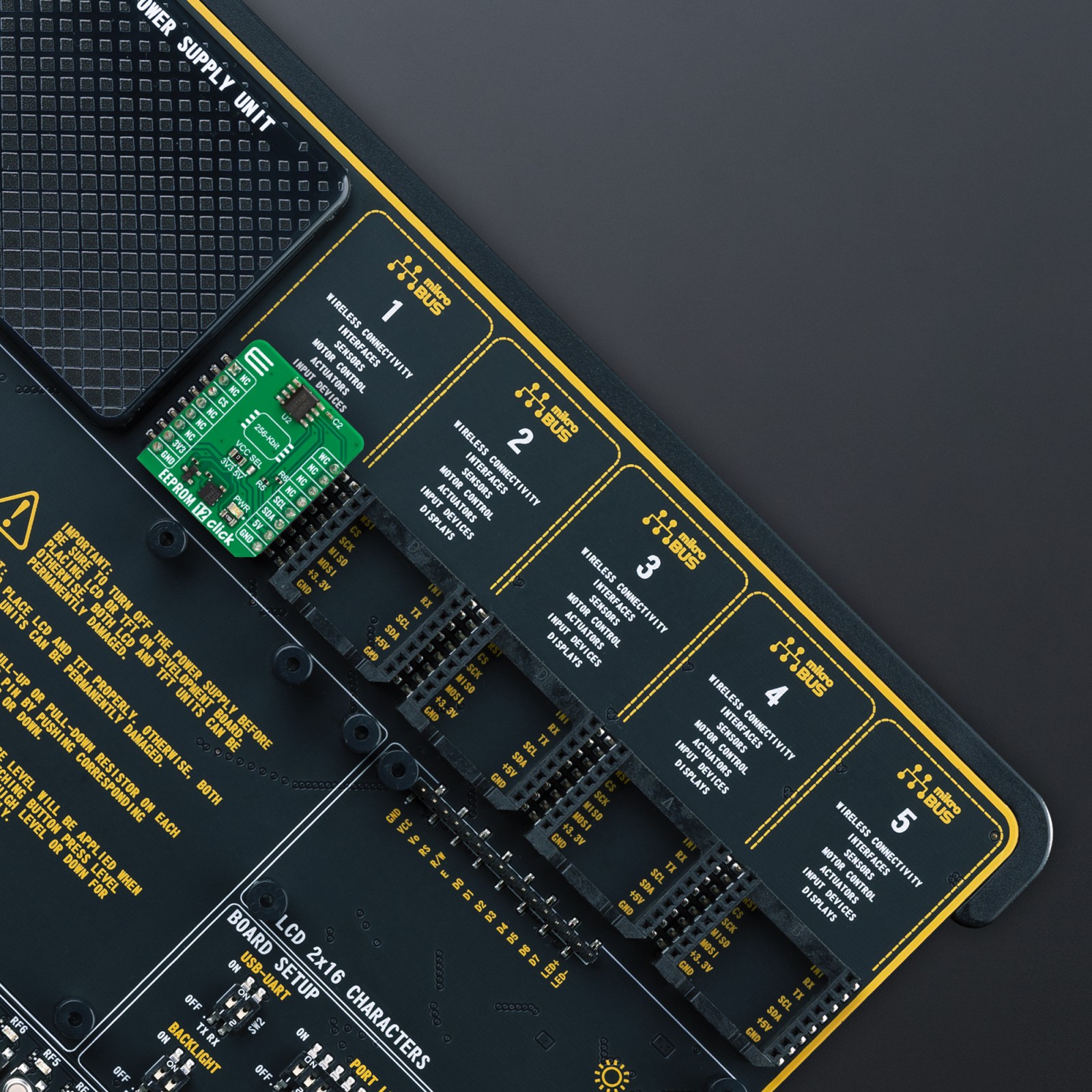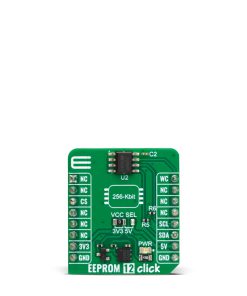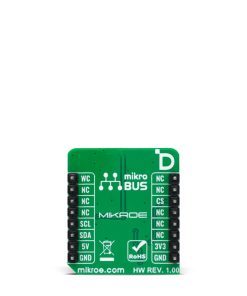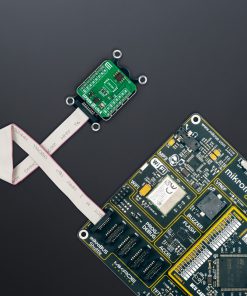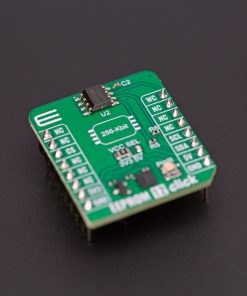EEPROM 12 Click is a compact add-on board that contains a highly reliable, nonvolatile memory solution. This board features the M24256E, an EEPROM from STMicroelectronics. It is a 256Kbit (32KB) EEPROM with a page size of 64 bytes and an additional identification page with the same size. This identification page can be read or written and (later) permanently locked in read-only mode and can be used to store sensitive application parameters. This Click board™ makes the perfect solution for the development of the development of consumer electronics, office equipment, communication devices, medical equipment, automobile equipment, and more.
EEPROM 12 Click is fully compatible with the mikroBUS™ socket and can be used on any host system supporting the mikroBUS™ standard. It comes with the mikroSDK open-source libraries, offering unparalleled flexibility for evaluation and customization. What sets this Click board™ apart is the groundbreaking ClickID feature, enabling your host system to seamlessly and automatically detect and identify this add-on board.
 METHANE Click
1 × R330.00
METHANE Click
1 × R330.00  RN4678 Click
1 × R850.00
RN4678 Click
1 × R850.00  Proximity Click
1 × R220.00
Proximity Click
1 × R220.00  microSD Click
1 × R350.00
microSD Click
1 × R350.00 
